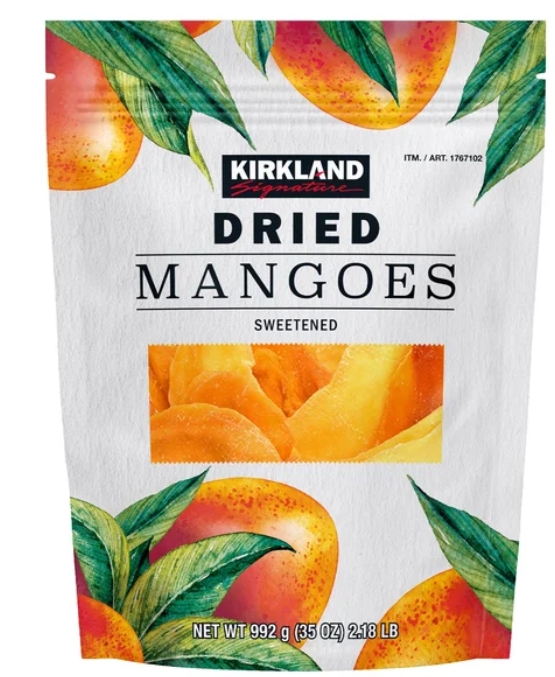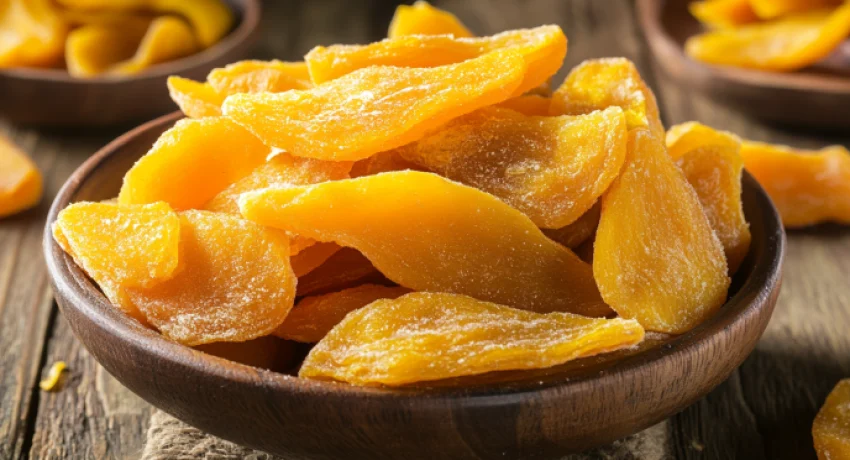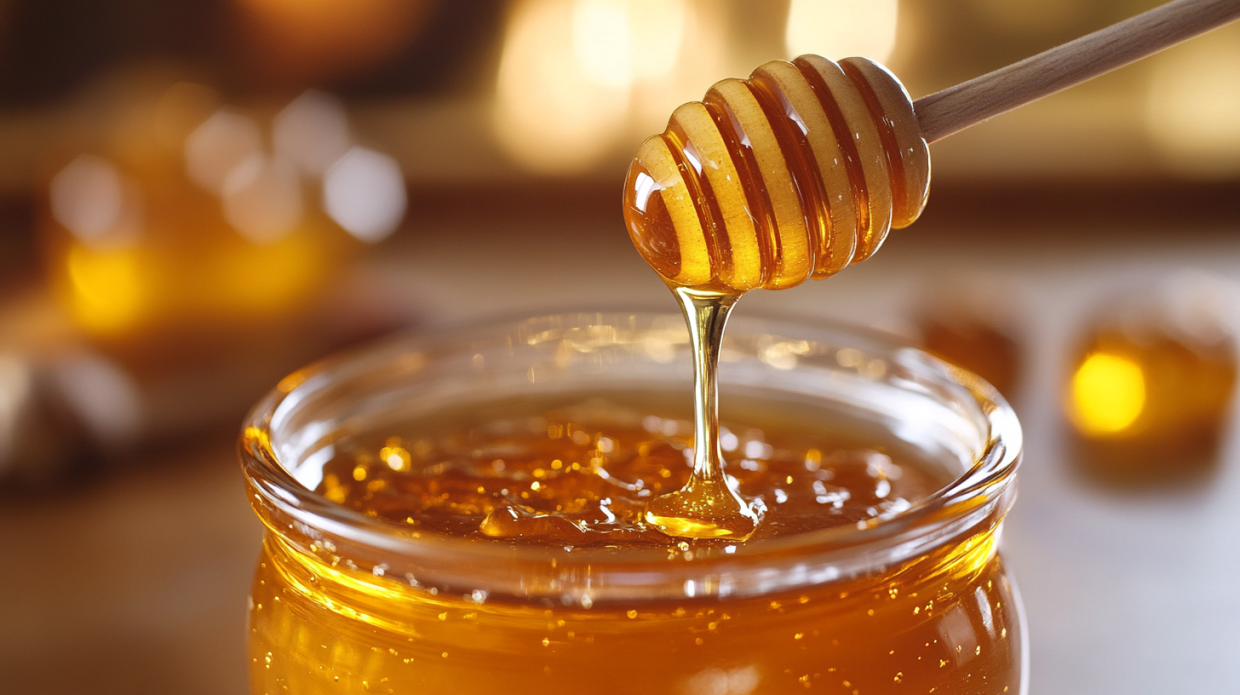
Kirkland Signature Dried Mangoes, Sweetened, 35 oz
- Sweetened
- Total Net Weight: 35 oz
- Fat Free
- Product of Cambodia
A Tropical Treasure in Your Pantry: Exploring Costco’s Popular Fruit Snack
The moment you tear open a bag of Kirkland Dried Mango, that distinct tropical aroma transports you straight to an island paradise. There’s something almost magical about how these chewy, sweet slices capture the essence of perfectly ripened mangoes. As a long-time dried fruit enthusiast (yes, we exist!), I’ve sampled countless varieties from health food stores to farmers markets, but the Kirkland version from Costco consistently earns a permanent spot in my pantry.
Whether you’re a dedicated Kirkland dried mango fan or simply curious about this popular Costco offering, this comprehensive guide will satisfy all your questions about this beloved snack. From ingredients and nutrition to creative ways to enjoy it, we’re diving deep into everything you should know about Kirkland Signature Dried Mango slices – arguably one of Costco’s most addictive products.
What Exactly Is in Your Bag of Kirkland Dried Mango?
Let’s start with the basics. What are you actually eating when you indulge in these golden-orange slices? Kirkland Signature Dried Mango contains remarkably few ingredients, which is part of its appeal for health-conscious snackers.
The primary ingredient is, of course, mango. Specifically, Kirkland uses the Tommy Atkins variety, known for its fibrous texture and sweet-tart flavor profile that holds up well to the drying process. Unlike some competing brands that use green, unripe mangoes, Kirkland selects fruit at peak ripeness before processing.
However, it’s important to note that Kirkland Dried Mango is not a completely unadulterated product. The ingredient list also includes added sugar and sulfur dioxide. The sugar enhances the natural sweetness of the fruit, while sulfur dioxide serves as a preservative to maintain color and extend shelf life. This addition gives the mango slices their vibrant orange-yellow appearance rather than the brownish hue that naturally dried mangoes develop.
For those wondering if Kirkland Dried Mango is organic, the answer is no. While Costco does offer various organic products under the Kirkland Signature brand, their dried mango is conventionally grown. This factor contributes to its more accessible price point compared to organic alternatives.
Nutritional Profile: Is Kirkland Dried Mango Actually Healthy?
Dried fruit exists in that interesting space between “natural health food” and “candy alternative,” and Kirkland’s version is no exception. Let’s break down what you’re getting nutritionally when you eat these chewy treats.
A typical serving size (40g or about 1/4 cup) of Kirkland Dried Mango contains:
- Calories: 140-150
- Total Fat: 0g
- Sodium: 0-5mg
- Total Carbohydrates: 34-36g
- Dietary Fiber: 2-3g
- Sugars: 26-30g (includes both naturally occurring and added sugars)
- Protein: 1g
- Vitamin A: 25% of Daily Value
- Vitamin C: 15% of Daily Value
The nutritional profile reveals both the benefits and drawbacks of this snack. On the positive side, dried mango offers significant vitamin A, supporting eye health and immune function. It also provides some vitamin C, though much of this is lost during the drying process. The fiber content, while not extraordinary, contributes to digestive health.
The main nutritional concern is the sugar content. With approximately 30 grams per serving, Kirkland Dried Mango should be enjoyed in moderation, especially for those monitoring blood sugar levels or watching calorie intake. The added sugar combined with the naturally concentrated sugars from the drying process makes this a relatively high-sugar food.
That said, when compared to candy or many processed snacks, Kirkland Dried Mango offers more nutritional benefits with its vitamin content and absence of artificial flavors or colors. It’s best viewed as a treat with some nutritional merits rather than an everyday health food.
Dietary Considerations: Who Can Enjoy Kirkland Dried Mango?
If you have dietary restrictions or follow specific eating plans, here’s what you need to know about incorporating Kirkland Dried Mango into your diet:
Gluten-Free Status
Good news for those with celiac disease or gluten sensitivity! Kirkland Dried Mango is naturally gluten-free. The product contains no wheat, barley, rye, or derivatives that would introduce gluten. However, as always with food allergies, it’s wise to check the most current packaging for any changes in processing methods or facilities.
Vegan-Friendly
Kirkland Dried Mango is suitable for vegan diets. It contains no animal products or byproducts in the ingredients or processing. The sugar used is typically commercial cane sugar, which some strict vegans might question due to processing methods, but it’s generally accepted within the vegan community.
Keto Considerations
For those following a ketogenic diet, Kirkland Dried Mango presents challenges. With approximately 34g of carbohydrates per serving and minimal protein or fat, it’s not aligned with keto macronutrient goals. The high sugar content makes it difficult to fit into a low-carb eating plan, so those strictly following keto would typically avoid this product.
Allergen Information
Mango belongs to the same botanical family as cashews and pistachios, so individuals with severe tree nut allergies should be aware of potential cross-reactivity. Additionally, the sulfur dioxide used as a preservative can trigger asthmatic reactions in sulfite-sensitive individuals.
Where to Buy and How Much It Costs
As a Kirkland Signature product, the primary retailer is, of course, Costco. The dried mango is typically sold in 30-ounce (1.87 pound) packages, though packaging size may vary by location or over time.
The price point is one of the most compelling aspects of Kirkland Dried Mango. At Costco warehouses, you can generally find the large bag priced between $10.99 and $13.99, depending on your location and any ongoing promotions. This translates to approximately $0.36-$0.47 per ounce, making it significantly more economical than comparable products at conventional grocery stores, which often charge $1.00 or more per ounce for dried mango.
If you don’t have a Costco membership, you might still be able to purchase Kirkland Dried Mango through third-party sellers on platforms like Amazon, though typically at a markup from the warehouse price. Some Costco locations also allow non-members to shop with a member or purchase items via Instacart delivery, though service fees apply.
Storage and Shelf Life: Making Your Mango Last
One of the advantages of dried fruit is its extended shelf life compared to fresh produce. Properly stored, Kirkland Dried Mango can last quite a while in your pantry.
The unopened package typically has a shelf life of 12-18 months from the production date, which you’ll find stamped on the packaging. Once opened, the best practice is to consume the dried mango within 2-3 months for optimal flavor and texture.
To maximize freshness after opening, store the mango in an airtight container. While refrigeration isn’t strictly necessary, keeping the opened package in the refrigerator can extend freshness, particularly in humid climates. If you notice any mold, off odors, or significant changes in texture, it’s best to discard the product.
For those who purchase the large Costco-sized bag but won’t consume it quickly, consider dividing the contents into smaller portions and freezing some. Frozen dried mango can last up to a year and thaws quickly at room temperature.
Culinary Adventures: Creative Ways to Use Kirkland Dried Mango
While snacking straight from the bag is the most common way to enjoy dried mango, this versatile ingredient can enhance many recipes. Here are some inspired ways to incorporate Kirkland Dried Mango into your culinary repertoire:
Breakfast Innovations
- Chop finely and fold into pancake or waffle batter for tropical breakfast treats
- Add to overnight oats or morning yogurt bowls with coconut flakes for a taste of the tropics
- Blend into smoothies for natural sweetness and mango flavor (pre-soak in warm water for easier blending)
Baking Projects
- Substitute for raisins in oatmeal cookies for a unique twist
- Incorporate into homemade granola bars or energy bites
- Add to quick breads like banana or zucchini bread for extra sweetness and texture
- Use as a decorative and flavorful topping for tropical-themed cakes or cupcakes
Savory Applications
- Dice and add to quinoa or grain salads with lime and cilantro
- Include in spicy salsas for a sweet counterpoint to the heat
- Simmer in curries or tagines for a touch of sweetness
- Chop and add to couscous with mint and pistachios
Homemade Trail Mix
Create your own signature trail mix by combining Kirkland Dried Mango with:
- Raw or roasted nuts (almonds, cashews, and macadamias pair particularly well)
- Coconut flakes or chips
- Dark chocolate chunks
- Other dried fruits like pineapple or banana
- Pumpkin or sunflower seeds
Infusions and Beverages
- Infuse vodka or white rum with dried mango for tropical cocktails
- Steep in hot water for a naturally sweet fruit tea
- Add to a pitcher of water with mint and lime for subtly flavored hydration
When using Kirkland Dried Mango in cooking or baking, keep in mind that it’s firmer than some other dried fruits. For recipes where a softer texture is desired, consider rehydrating the mango by soaking pieces in warm water for 10-15 minutes before draining and incorporating into your dish.
Sustainability and Sourcing: The Journey from Farm to Package
For environmentally conscious consumers, understanding where food comes from and how it’s produced is increasingly important. Kirkland Signature, like many Costco private label products, aims to balance quality, price, and responsible sourcing.
Kirkland Dried Mango is primarily sourced from Mexico, the Philippines, and Thailand—countries where mangoes grow abundantly and have established processing facilities. The Tommy Atkins variety used is selected for its durability and consistent quality rather than being the most exotic or flavorful mango variety available.
While not certified organic, Costco does maintain supplier standards regarding pesticide use and agricultural practices. The company has made public commitments to improving sustainability across their supply chains, though specific information about the mango farms supplying their dried fruit is limited.
The packaging consists of a resealable plastic bag, which prioritizes freshness and convenience over environmental considerations. Environmentally conscious consumers might choose to transfer the product to reusable containers and properly recycle the original packaging where facilities exist.
For those particularly concerned about sustainability, organic certification, or fair trade practices, there are specialty brands that focus more explicitly on these aspects, though typically at a higher price point than the Kirkland option.
How Does Kirkland Compare to Other Dried Mango Brands?
The dried mango market offers numerous options at various price points and quality levels. How does Kirkland’s version stack up against the competition?
Taste and Texture Comparison
Kirkland Dried Mango is characterized by its substantial chewiness and pronounced sweetness. Compared to premium brands like Made in Nature or Bare, which often offer unsulfured or no-sugar-added options, Kirkland’s product is sweeter and more vibrantly colored. Some specialty brands offer more exotic mango varieties with different flavor profiles, while Kirkland focuses on consistency and broad appeal.
Value Analysis
Where Kirkland truly shines is value. At approximately $0.40 per ounce, it’s significantly more affordable than health food store options that often range from $1.00-$2.00 per ounce. The bulk packaging also reduces packaging waste compared to smaller portions.
Ingredient Comparison
Many premium brands differentiate themselves with organic certification or by eliminating added sugar and preservatives. These products typically have a darker color, less sweet taste, and sometimes a tougher texture—along with a higher price tag. Kirkland takes a middle-ground approach, using some additives to maintain appealing color and texture while keeping the ingredient list relatively simple.
Consumer Reviews
Kirkland Dried Mango consistently receives positive reviews from Costco members, with many citing the value, consistent quality, and addictive taste as key selling points. Common criticisms include the added sugar content and occasional texture inconsistencies between batches. On various consumer review platforms, Kirkland’s version typically earns 4-4.5 out of 5 stars, indicating strong satisfaction among regular purchasers.
The Sweet Finale: Is Kirkland Dried Mango Worth Adding to Your Cart?
After exploring every aspect of this popular Costco product, what’s the verdict? Is Kirkland Signature Dried Mango worthy of your shopping cart and pantry space?
For most consumers, the answer is a resounding yes—with some caveats. The exceptional value, convenient packaging, and reliably delicious taste make Kirkland Dried Mango a smart purchase for most Costco members, particularly those who enjoy dried fruit regularly or have families with multiple snackers.
The product isn’t perfect—the added sugar may be a concern for some, and those seeking organic certification or particular sustainability credentials might prefer specialty brands. However, for the vast majority of shoppers seeking a tasty, relatively wholesome treat at an excellent price point, Kirkland Dried Mango delivers impressively.
Whether you’re tossing a handful into your lunch bag, incorporating it into creative recipes, or simply enjoying it as an occasional sweet treat, Kirkland Dried Mango represents one of those Costco finds that keeps members coming back. Its consistent quality and value exemplify why the Kirkland Signature line has built such a devoted following among savvy shoppers.
So next time you’re wheeling your oversized cart through the treasure hunt that is Costco, consider adding that big bag of golden-orange mango slices to your haul. Your taste buds will thank you—just remember that moderation is key with this irresistibly sweet treat!
The Final Slice: Your Dried Mango Questions Answered
As we wrap up our comprehensive look at this popular Costco staple, here are quick answers to some remaining frequently asked questions:
- Can children eat Kirkland Dried Mango? Yes, it’s safe for children, though the chewy texture could be challenging for very young ones. Consider cutting into smaller pieces for toddlers and be mindful of the sugar content.
- Is the sulfur dioxide in Kirkland Dried Mango harmful? For most people, the small amount used as a preservative poses no health concerns. However, those with sulfite sensitivities or severe asthma should exercise caution.
- Why does Kirkland Dried Mango cost less than other brands? Costco’s bulk purchasing power, efficient supply chain, and direct relationships with producers allow them to offer better pricing than smaller retailers.
- Can I use Kirkland Dried Mango to make mango chutney? Absolutely! Rehydrate it first by soaking in warm water, then proceed with your chutney recipe. The concentrated flavor works wonderfully in preserves and condiments.
- Does the nutritional value change when using dried mango in cooking? The calorie and sugar content remain the same, but cooking may further reduce heat-sensitive vitamins like vitamin C.
- Is there a limit to how much Kirkland Dried Mango I should eat? While there’s no strict limit, the high sugar content makes moderation advisable. A single serving (about 1/4 cup) makes a reasonable snack portion.
Whether you’re a longtime fan or new to the Kirkland Dried Mango experience, I hope this guide has satisfied your curiosity and perhaps inspired new ways to enjoy this tropical treat. Happy snacking!




